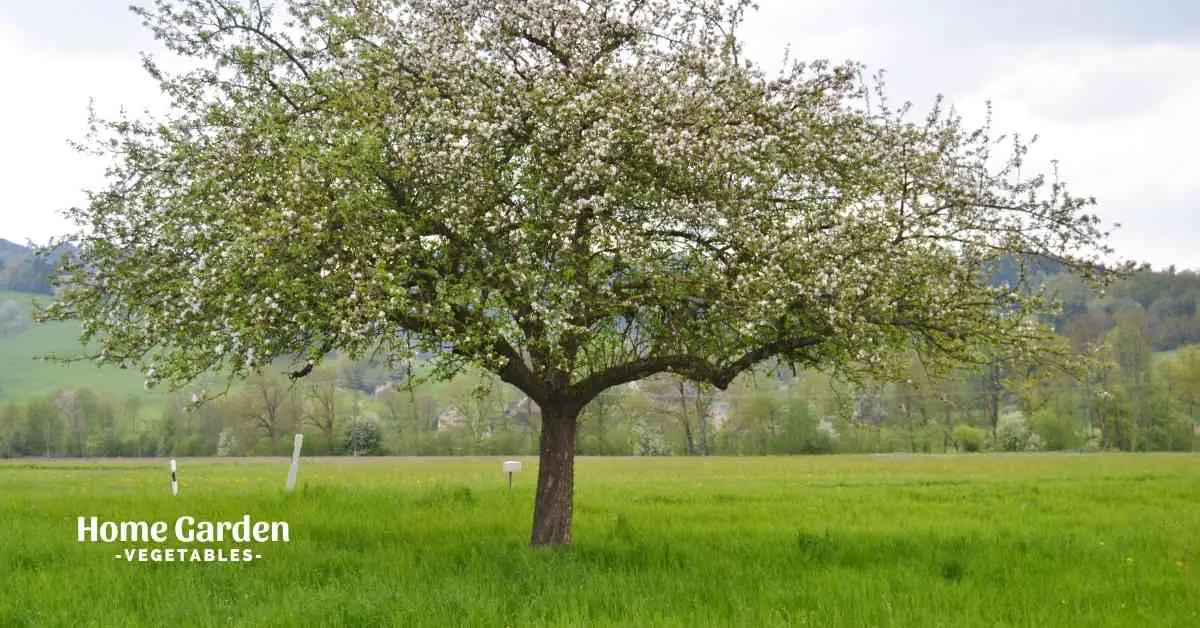Fruit trees, including apple trees, need to be pruned every year to boost their health and keep them producing optimally through the seasons. If you skip pruning, you’ll notice a phenomenon called “alternate bearing”. This means that if one year’s harvest is good, the next year’s harvest won’t be impressive.
Pruning during the dormant season is important to rejuvenate the tree, opening the canopy for better air circulation and sunlight, encouraging fresh growth and promoting fruit yield. Gear yourself with loppers and saw as you read the guide below on how to prune an apple tree.
Reader Poll: What online courses would interest you?
When To Prune Apple Tree
Apple trees, and all other fruit trees for that matter, should be pruned when they are dormant. Late winters, when all new growth is halted, is the best time for annual pruning of trees. Other than that, you can also prune them in the spring and summers if you feel the need. Some gardeners also practice summer pruning, since it encourages blooming and fruiting.
However, avoid pruning in the fall since pruning may stimulate new growth at the wrong time, just when the tree should be preparing for winter dormancy. New growth right before frost increases the chances of cold damage to the tree.
Instead, wait until the leaves have fallen off, which means that the tree is fully dormant, to prune the trees. This makes sure that no new growth will follow after pruning, until the weather warms up in the spring. Don’t be nervous to prune your trees in the frosty weather. As long as they’re dormant, pruning won’t damage them even if the temperatures are very low.
Subscribe to our newsletter!
How To Prune Apple Trees
Prune the apple tree in stages to address all the problems:
- Diseased, Damaged And Dead Branches
Diseased, damaged and dead branches are removed first. Damaged and dead branches are the ideal entry points for pests and infections and, therefore, need to go. Diseased branches can be identified by odd structures that shouldn’t be there, sometimes oozing liquids. These are actually points where spores are developing and will attack the healthy parts of the plant as soon as the weather warms up, unless they are removed.
Whether the branches are diseased, damaged or dead, make sure to make the cut on the healthy part of the stem to prevent the problem from spreading.
- Crossing Branches
Next, identify the crossing branches and remove the weaker one out of each pair. Crossing branches are the ones that are rubbing each other or are growing too close to one another and are likely to rub when they are weighed down with fruit.
Crossing branches overcrowd the canopy, preventing air and sunlight from reaching the inner branches. Not only this, but rubbing of bark may also result in injury, making the tree prone to pest infestations and diseases.
So look for branches that come in each other’s way and remove some of those until they stand independently without rubbing any other.
- Remove Inward-Facing Branches
Inward-facing branches are any branches that are pointing towards the center of the canopy. These branches block sunlight and air for the rest of the tree and should be removed neatly with a thinning cut, i.e at the point where they connect to the rest of the tree.
- Fix the Size And Shape
Next, you’ll aim at maintaining a good size and shape of the overall tree. Remove branches that are extending beyond the canopy either through the top or the sides of the tree. You can either make thinning cuts, removing the branches from the point where they emerge, or by making heading cuts to shorten the branch.
- Trimming
Finally, give your tree a nice trimming by ‘heading back’. Here, the aim is to make ‘heading cuts’ to shorten the branches, encouraging a low and wider canopy. When trimmed each year, the branches are trained to grow shorter and thicker. Not only does it encourage new growth in spring, but also makes the tree easier to harvest. You can cut back the branches to about one-quarter or one-third to keep the tree’s size in check.
Pruning A Young Apple Tree
Young apple trees, older than three years, benefit most from “heading back” to maintain a low and compact canopy in the coming years. This redirects the tree’s energies into growing shorter, thicker and lower branches, making pruning and harvesting easier in the later years. However, it’s important not to over prune young trees since the roots are still developing and you wouldn’t want to subject your tree to any additional stress, such as that from a heavy pruning.
Pruning An Old Apple Tree
If an old apple tree has been neglected over the years and has been growing without any pruning, gear yourself for a major pruning job. Problematic branches, such as diseased, damaged or dead ones will need to be cut out. Also remove the branches growing too close to make the canopy thinner. The tree will also need to be shaped. However, it’s important not to go overboard and do all the pruning at once. Pruning too much at once triggers vigorous upward growth in the spring. The tree tends to extend upwards instead of sideways and won’t bear any fruit since it will focus its energies on regrowth to counter the effects of over pruning.
Instead, avoid pruning more than 20-30% on an old apple tree. Even if the tree needs a lot of pruning, try to spread it out over a course of 2 to 3 years. Let the tree come back in good shape over an extended span of time to prevent any stress.
Conclusion
This is how to prune apple trees. Prune your tree every year to keep it looking beautiful and to enjoy a bountiful harvest every fall.

